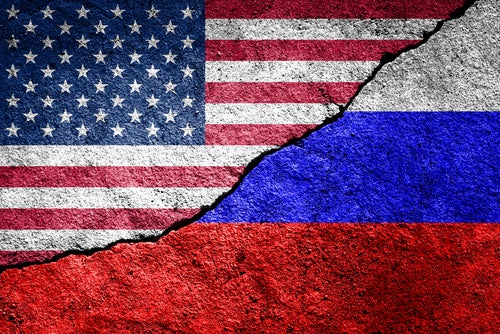
The US Government’s initial sanctions placed on exports to Russia due to its invasion of Ukraine are focused on software, technology and defence as well as restrictions on a number of financial institutions, which will not have an impact on the apparel industry straightaway. However, US-based international trade law firm Sandler, Travis & Rosenberg says additional measures are possible in the coming days.
The American Apparel & Footwear Association’s (AAFA) president and CEO Steve Lamar tells Just Style exclusively that his organisation is keeping a close eye on the situation as it progresses.
He says: “We are working closely with our members to track the evolving situation, including the effects this will have on supply chains, other global economic factors, and the imposition of sanctions. Our industry goes to great lengths to make sure operations are fully compliant with all existing and any new sanctions.”
While, United States Fashion Industry Association (USFIA) president Julia Hughes notes despite Ukraine not being a major supplier to the US market, it is important to some US companies. During 2021, the US imported more than US$20m in apparel from Ukraine, she says.
“It is tragic to see the Russian invasion of Ukraine. There will be widespread geopolitical and economic impacts, as well as the immediate impact on the people of Ukraine. Our hearts go out to them.”
Associate professor of fashion and apparel studies at University of Delaware, Dr Sheng Lu concurs.
He says: “While Russia and Ukraine play a minor role in apparel production and trade, it doesn’t mean the apparel industry is immune to the ripple effects of the military conflict.
“For example, as the immediate result of the escalated tension, the world oil price jumped substantially. This means textile fibres derived from oil, such as polyester, could face tremendous price pressure. As man-made fibre becomes more expensive, the demand for natural fibre could also increase, extending the price inflation to natural fibre eventually.”
Dr Lu also agrees the vast uncertainty and risk caused by the incident for the world economy and geopolitics could be a more significant concern.
He highlights a fluctuating financial market and a slower world economy would complicate the post-covid recovery.
“We might also need to closely watch the implications of the military conflict for the US-China relationship and stability in the Indo-pacific region. Fashion companies have high stakes in this region,” he notes.
Yesterday (24 February), the European Apparel and Textile Confederation (Euratex) and apparel industry expert Robert Antoshak revealed how Russia’s aggression towards Ukraine could lead to increased costs for the global apparel industry.



